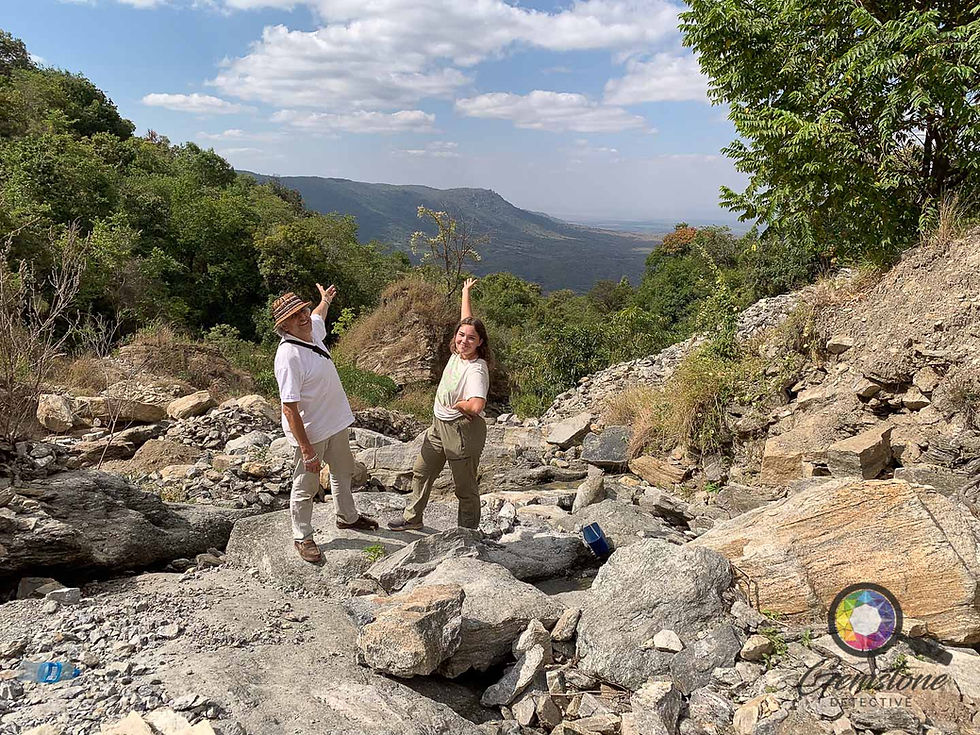How Are Gemstones Found? Your Essential Gemstone Guide
- Kim Rix

- Jul 12, 2024
- 3 min read
Hey there! If you're a gemstone enthusiast just starting out, you're probably curious about how these treasures are found. This gemstone guide will help you explore this fascinating topic together, and I'll show you why it ties in perfectly with what you'll discover on gemstonedetective.com.

Understanding the Science and Adventure Behind Gem Hunting
At its core, a gemstone detective is someone who investigates the origins and authenticity of gemstones. The idea is all about digging deeper into where gemstones come from and how they are extracted. This topic is relevant to gemstonedetective.com because the site is dedicated to educating enthusiasts like you on the intricate journey of gemstones—from their formation to being the jewels we cherish.
The Birth of Gemstones
Gemstones don't just appear out of nowhere; they have an incredible journey! They are formed over millions of years deep within the Earth's crust, thanks to some pretty phenomenal geological processes. Let's break it down:
Magmatic Crystallization: Imagine molten rock (magma) cooling down and solidifying into crystals. That's how we get amazing gemstones like diamonds and rubies.
Hydrothermal Deposition: Picture hot, mineral-rich fluids flowing through cracks in rocks. These fluids eventually deposit minerals that crystallize into stunning gemstones like emeralds and amethysts.
Metamorphism: Think of rocks undergoing intense heat and pressure, transforming into new rock types laden with gemstones. Sapphires and garnets often emerge this way.

Where to Find Them
After they form, gemstones don't just stay put. They can be found in all sorts of places:
Primary Deposits: These are the original spots where gemstones form, typically within igneous or metamorphic rocks. Imagine a treasure hunt through volcanic pipes or ancient mountain formations.
Secondary Deposits: Nature, with its erosions and flowing rivers, can relocate gemstones to new places like riverbeds and alluvial plains—perfect spots for aspiring gemstone detectives to explore.

Unearthing the Gems
So, how do we get these gemstones out of their hiding places? There are various methods, and they all depend on where the gemstones are found:
Open-Pit Mining: Think of this like digging a big, open hole to get to gemstones close to the Earth's surface. Perfect for accessible deposits.
Underground Mining: For those deeper treasures, miners dig tunnels or shafts. It's more intense, but worth it for those precious finds.
Alluvial Mining: This method is all about using water movement to sift through riverbeds and alluvial plains, uncovering gemstones from the sediment. It's almost like panning for gold but with gems!

Gemstone Guide: Exploring these processes and methods gives you a peek into the captivating world of gemstones.
For digging even deeper, here are some credible websites that provide valuable information if you are interested in gemstones:
Gemological Institute of America (GIA): The GIA is a world-renowned authority on gemstones and jewellery. They offer extensive resources on gemstone formation, identification, and evaluation.
Mindat.org: is a comprehensive database of minerals and gemstones from around the world. It includes detailed information on various gemstones, their locations, and geological contexts.
International Gem Society (IGS): IGS offers a wealth of articles, courses, and forums about gemstones. This site is perfect if you are looking to deepen your knowledge about gemstone identification, value, and market trends.
Mineralogy Database: This database provides detailed descriptions and images of a wide variety of minerals, including gemstones. It's a valuable resource for understanding the mineralogical aspects of gemstones.
GemScience.net: This website offers scientific insights into the formation and properties of gemstones. It’s a great resource for readers looking to understand the science behind gemstone creation and its characteristics.
National Geographic: Gemstones: National Geographic provides well-researched articles and educational resources on various natural topics, including gemstones. Their content is accessible and visually appealing.
Cool hey? Let's dig deeper together!
Kim Rix GG GIA
Gemstone Detective
Be sure. Be smart. Buy with confidence



Comments